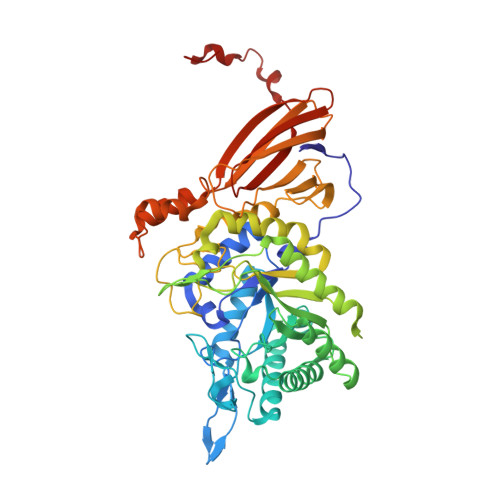Enzyme-Substrate Complex Structures of a Gh39 Beta-Xylosidase from Geobacillus Stearothermophilus.
Czjzek, M., David, A.B., Bravman, T., Shoham, G., Henrissat, B., Shoham, Y.(2005) J Mol Biol 353: 838
- PubMed: 16212978
- DOI: https://doi.org/10.1016/j.jmb.2005.09.003
- Primary Citation of Related Structures:
2BFG, 2BS9 - PubMed Abstract:
Beta-D-Xylosidases are glycoside hydrolases that catalyse the release of xylose units from short xylooligosaccharides and are engaged in the final breakdown of plant cell-wall hemicelluloses. beta-D-Xylosidases are found in glycoside hydrolase families 3, 39, 43, 52 and 54. The first crystal structure of a GH39 beta-xylosidase revealed a multi-domain organization with the catalytic domain having the canonical (beta/alpha)8 barrel fold. Here, we report the crystal structure of the GH39 Geobacillus stearothermophilus beta-D-xylosidase, inactivated by a point mutation of the general acid-base residue E160A, in complex with the chromogenic substrate molecule 2,5-dinitrophenyl-beta-D-xyloside. Surprisingly, six of the eight active sites present in the crystallographic asymmetric unit contain the trapped covalent glycosyl-enzyme intermediate, while two of them still contain the uncleaved substrate. The structural characterization of these two critical species along the reaction coordinate of this enzyme identifies the residues forming its xyloside-binding pocket as well as those essential for its aglycone recognition.
Organizational Affiliation:
Station Biologique de Roscoff, Végétaux Marins et Biomolécules, UMR7139-CNRS-UPMC, Place George Teissier, BP74, 29682 Roscoff, France. czjzek@sb-roscoff.fr















